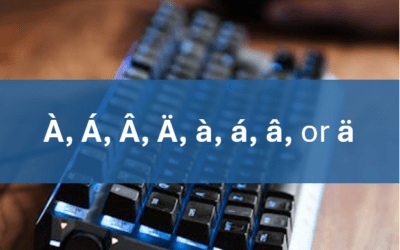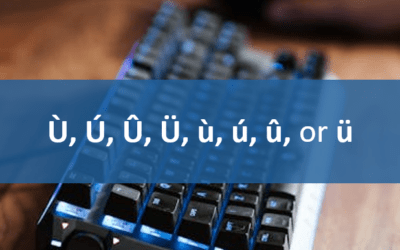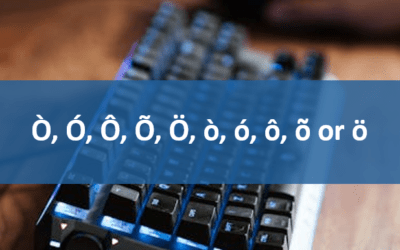Save Time Browsing With These Useful Keyboard Shortcuts
Article by: Sandra Linton
Posted: April 30, 2015
Updated: May 5, 2015
Applies to: Windows
For desktop and laptop users, there are lots of shortcuts you can use when you're browsing the web. Because of accessibility requirements and the need to ensure that everyone can access web sites, many shortcuts are now consistent in Chrome, Firefox and Internet Explorer. You can also try these out in other browsers. These shortcuts were tested in Windows 8 and 8.1.
For Mac users, try using Command where Control is listed.
Related: Navigating the Microsoft Office Ribbon Using a Keyboard and Google Tricks You Should Know to Improve Your Search Results
Zooming in and zooming out
- Keep pressing Control + plus sign (+) to zoom in.
- Keep pressing Control + minus sign (-) to zoom out.
- Press Control + zero (0) to return to the default (usually 100%).
- Press F11 to go to full screen mode or exit full screen mode.
Working with tabs and windows
Use the following shortcuts when you're working with tabs and windows:
- Press Control + Tab to move to the next tab.
- Press Control + Shift + Tab to move to the previous tab.
- Press Control + 9 to go to the last tab.
- Press Control + 1 to go to the first tab.
- Press Control + 2 to go the second tab from the left (and so on for 3, 4 etc.).
- Press Control + T to open a new tab.
- Press Control + L or Alt + D to put the focus in the Address Bar.
- Press Control + K to open a duplicate tab (in Chrome, press Control + L or Alt + D to put the focus in the Address Bar and then press Alt + Enter).
- Press Control + N to open a new browser window.
- To reopen the last closed tab, press Control + Shift + T.
- Press Control + W or Control + F4 to close the current tab.
- Press Alt + F4 to close the current window.
Navigating in the current page
To navigate in the current page:
- Move to the top by pressing Home.
- Move to the end by pressing End.
- To move down by screen/frame, press Spacebar or Page Down.
- To move up by screen/frame, press Shift + Spacebar or Page Up.
- Keep pressing Tab to move forward through options or areas.
- Keep pressing Shift + Tab to move backward through options or areas.
- To find text on the page, press Control + F and then type the text and press Enter.
General navigation
- Press Alt + left arrow to go back (equivalent to clicking on the Back button).
- Press Alt + right arrow to go forward (equivalent to clicking on the forward button).
- Press Control + R or F5 to reload the page.
- Press Control + Shift + R or Control + F5 to reload the page and skip the cache.
- Press Alt + Home to open the home page.
- Press Control + A to select all of the content on the page.
- Press Control + C to copy the selected content to the Clipboard.
History and bookmarks
- Press Control + D to bookmark the current website and then choose the desired options.
- Press Control + H to display the browsing history.
- Press Control + Shift + Delete to display a dialog to delete the browsing history.
- Press Control + J to view the download history.
Accessing the menu
- Press Alt + F to open the File menu in Firefox and Internet Explorer or the main menu in Chrome.
- Press Alt to display the menu bar in Firefox and Internet Explorer.
- Once the menu is displayed using the methods above, you can then press the underlined letter to select the next option or use the arrow keys and then press Enter to select the highlighted option.
- Press Escape to stop an action or close the menu.
Opening, saving and printing
Like most other programs, you can use standard shortcuts for opening and saving:
- Press Control + O to display the Open dialog box.
- Press Control + S to display the Save dialog box (if saving for the first time).
- Press Control + P to display the print dialog.
The above shortcuts were tested with current versions of Chrome, Firefox and Internet Explorer. Try them out and you should save a lot of time.
Note: Keyboard behaviours can be different when viewing PDFs (Portable Document Format files) or when you are browsing certain sites like YouTube.
Subscribe to get more articles like this one
Did you find this article helpful? If you would like to receive new articles, join our email list.
Copyright 2014-2015 Avantix Learning Inc.
You may be interested in the following courses
Microsoft Excel: Intermediate/Advanced
Microsoft PowerPoint: Intermediate/Advanced
Microsoft Word: Designing Accessible Word Documents
To request this page in an alternate format, contact us.
You may also like
How to Insert or Type A with an Accent Mark in Google Docs (À, Á, Â, Ä, à, á, â, or ä) – 6 Ways
You can insert or type a with an accent mark in Google Docs in several ways. You can use built-in tools, online tools, add-ons or keyboard shortcuts (including Alt code shortcuts). The letter a can be inserted with an accent in both upper or lower case. The following are common accents in upper or lower case – À, Á, Â, Ä, à, á, â, or ä.
How to Insert or Type U with an Accent Mark in Google Docs (Ù, Ú, Û, Ü, ù, ú, û, or ü) – 6 Ways
You can insert or type u with an accent mark in Google Docs in several ways. You can use built-in tools, online tools, add-ons or keyboard shortcuts (including Alt code shortcuts). The letter u can be inserted with an accent in both upper or lower case. The following are common accents in upper or lower case – Ù, Ú, Û, Ü, ù, ú, û, or ü
How to Insert or Type O with an Accent Mark in Google Docs (Ò, Ó, Ô, Õ, Ö, ò, ó, ô, õ or ö) – 6 Ways
You can insert or type o with an accent mark in Google Docs in several ways. You can use built-in tools, online tools, add-ons or keyboard shortcuts (including Alt code shortcuts). The letter o can be inserted with an accent in both upper or lower case. The following are common accents in upper or lower case – Ò, Ó, Ô, Õ, Ö, ò, ó, ô, õ or ö.







